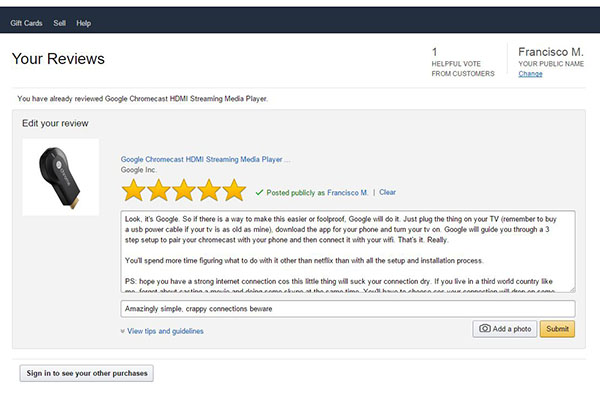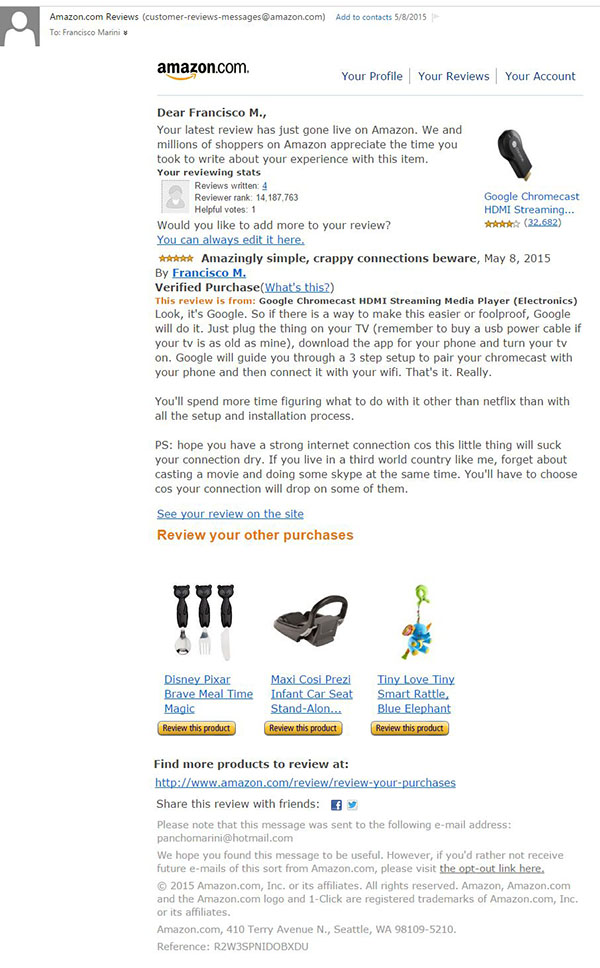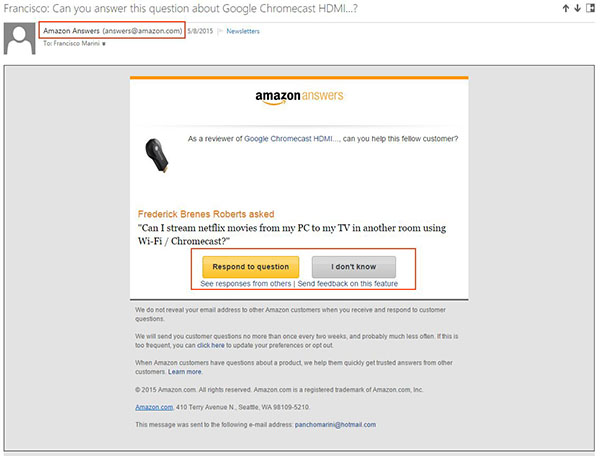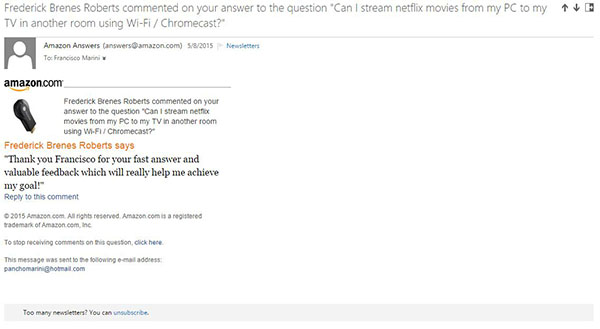To inspire! How to send triggered emails in the Amazon style?
Published in july, 23 of 2015
Last week, we shared with you how the Steam keeps contact with its customers by email and how an A / B testing was able to indicate the most effective way of communication. In this post, we'll show you another example, this time with the Amazon, which can inspire your creations of email marketing campaigns and transactional emails.
If you already make purchases from Amazon and if you also work with digital marketing, pay attention to what happens after the purchase, from the point of view of email marketing and transactional emails. It’s worth noting the network has millions of active clients and it’s based on a culture of innovation that, despite using the same software infrastructure and other online retailers, is what makes it really differentiate Amazon from others.
How do the emails flow from Amazon work?

If you are new to the area, the first email gives you a warm welcome. When making a purchase, the next step includes an order confirmation email. After that you receive a message with information about the shipping, including a ‘thank you’ for your preference. Going a step further, Amazon can send an invitation for a specific sale based on the product purchased; an email as “also buy” with recommendations; Black Friday deals, if it’s the case; an email to evaluate the purchase, for example; and finally, an email with suggestions based on the customer’s behavior individually.
These more personalized messages that follow the history of each one of your customers comes into another category, known as transactional emails.
In the example shown here, the first email is the confirmation with details of purchase, value, delivery time and some recommendations. The goal is to pass security, transparency and flexibility to the customer so that it can monitor the entire process closely.

One day after the delivery, you receive in your inbox an email to describe the process of buying and selling in relation to your expectations, deadlines and quality of the product(s).
If you can’t make an assessment at the time you received the email and, somehow, end up forgetting, Amazon interrupts the flow for only a month later resend an email asking for feedback about the buying process.
Which points should I consider?
Now that we have shown part of the process, including illustrations, it's time to evaluate the transactional emails in a set of written and visual language.
- The emails always follow the Amazon communication flow, with simple lines without colors, except for the characteristic orange mark on some highlights of the text;
- The sending account (sender) used is different in each email, allowing us to better separation from what is a traditional email marketing and what is a transactional email, for example. The messages are divided into several categories, depending on the content. This ensures that if there is any technical or delivery problem, others are not affected;
- The next email goes on a poll, but as it can’t be directly incorporated into the email, a model was created where each star for classification has a different link. By accessing the search page itself, the fields are filled according to what you click on the email. It’s a simple, but effective trick to generate a good call to action (CTA) to connect the email to the website.
The following of triggered emails

Unlike the first email sent, this new email is perfectly compatible with the mobile. Not only the message, but the whole process with the search page and everything else. The biggest bid of emails and responsive sites is eliminate that customer thought “I’ll see the email when I have my computer”. After all, why read it later if he or she can do that now on mobile or tablet.
Everything is done in a simple and practical way that can even pass that feeling of “I have to answer to not feel bad”. This is something that should be endorsed. The process of completing the poll and writing the review doesn’t take 5 minutes. Shortly after closing, a new email, using the same sender, comes to confirm your review has been published.

Depending on the type of text you write, just an opinion about the product or an assessment demonstrating greater knowledge about the new acquisition, Amazon can send another email for you to share what you know with other potential buyers answering their questions. And the message is simple and straightforward. You just need to choose between answering the question or not.

Which points should I consider?
After showing one more part of the process, including illustrations too, it’s time to evaluate the characteristics of the new transactional emails sent.
- Amazon kept using different sending accounts to demarcate who is the sender of each action;
- This email was noticeably different. Aesthetics and design follow the same direction with a different background, highlighting the main message from the other elements.
If you choose to answer, you will receive a simple email (from the same sender) with a ‘thank you’ from the person you helped.

Conclusion
If you look at the whole sequence of emails showed here, you will notice how easy it is to attract the attention of the recipient with a set of transactional emails ordered and planned simply and clearly. This logic of interaction is a good example to captivate the customer and his/her loyalty.
Therefore, use this model for inspiration when creating your emails flow. Take a blank sheet and then draw a diagram with a box for each email and which one will be sent depending on the interaction.
Did you like it? Share!
Meet us at social networks and take the reading forward!
Facebook, Twitter, LinkedIn, Google+
Do you have any questions about the platform or suggestions for our blog? Send it to us through the comments!